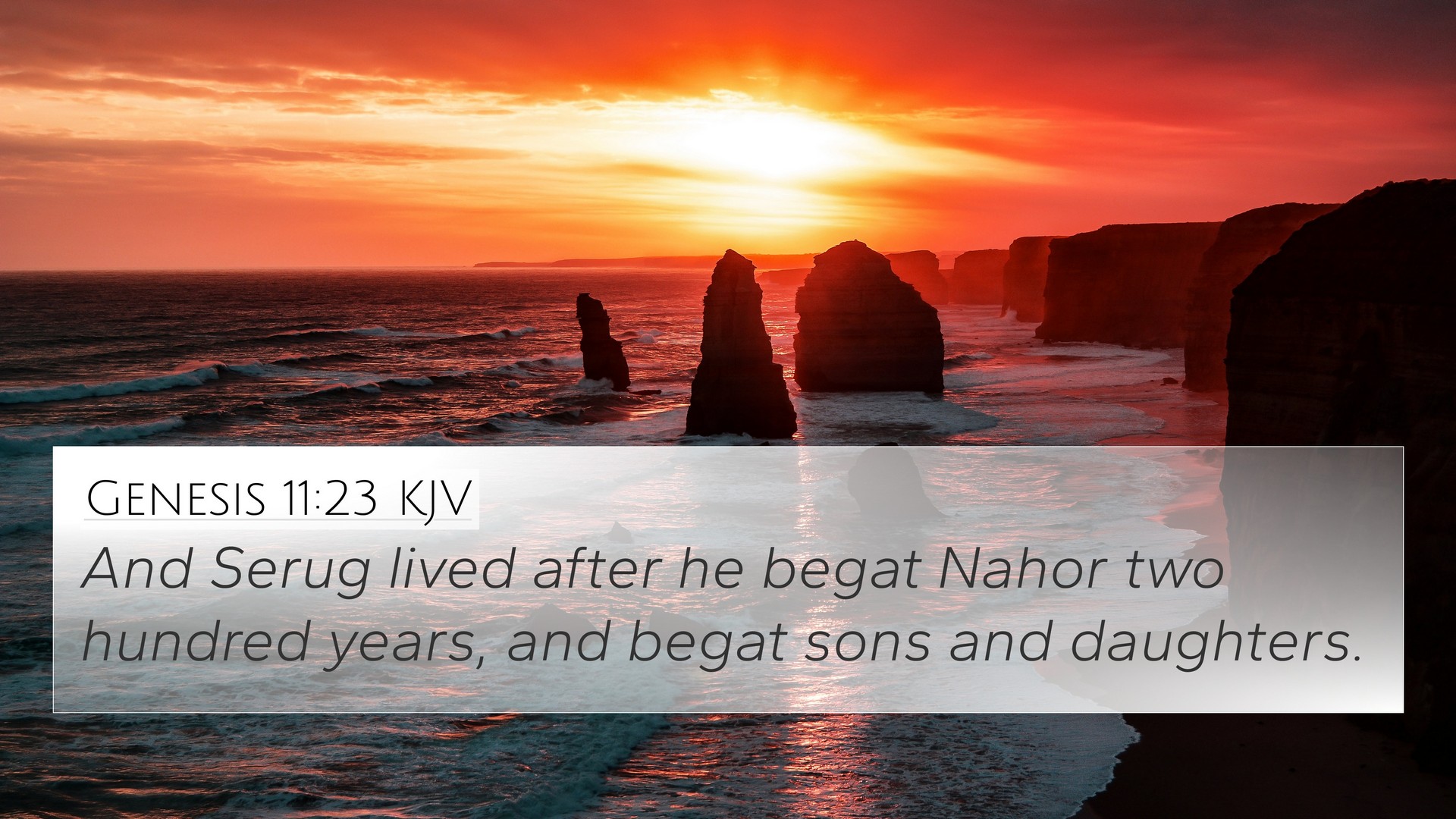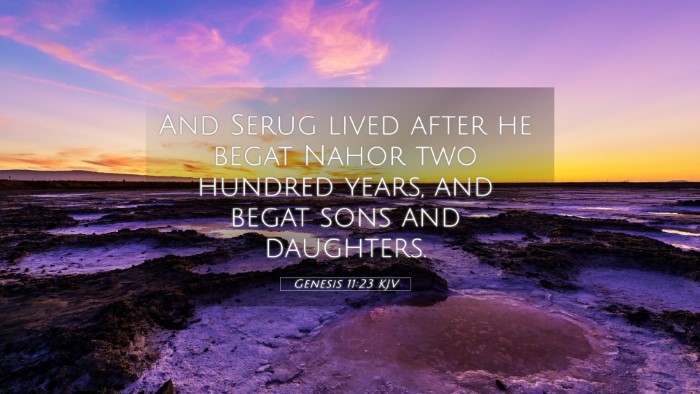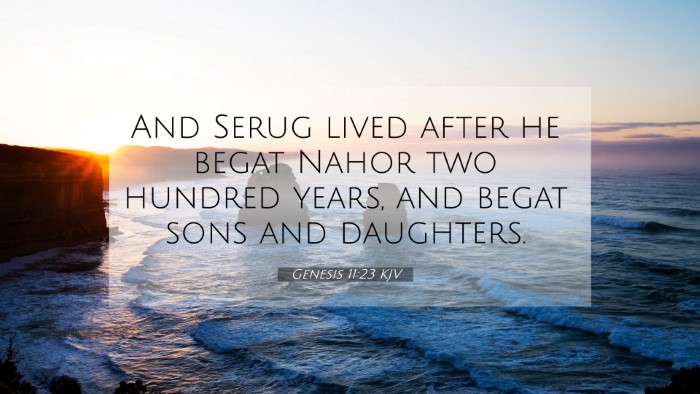Bible Verse Meaning: Genesis 11:23
Genesis 11:23 reads:
"And the days of Terah were two hundred and five years: and Terah died in Haran."
Summary of the Verse
This verse serves as a significant marker in the genealogy of the patriarchs, detailing the life span of Terah, Abram's father. It provides context regarding the timeline of biblical history leading up to the call of Abraham and underscores the details surrounding the transitions of the faithful lineage.
Insights from Commentators
- Matthew Henry:
Matthew Henry notes that the age of Terah emphasizes the long lives of early biblical figures and moments of transition in God's redemptive plan. His death signals the close of an era and the opening of a new chapter in the history of Israel.
- Albert Barnes:
Albert Barnes highlights the importance of Terah in relation to Abraham's call. The mention of Haran as the place of Terah’s death connects the rich narrative of familial ties and God's providential leading toward the future promised land.
- Adam Clarke:
Adam Clarke elaborates on the significance of Terah's name and legacy. He emphasizes the implications of Terah's life and death, linking it to the overarching themes of faith and obedience which are pivotal in the narrative of God’s covenant with Abraham.
Cross-References and Thematic Connections
Genesis 11:23 contains several intertextual connections and thematic links throughout the Bible. Here are some notable cross-references:
- Genesis 12:1-4: This passage details the call of Abraham, which follows shortly after the death of Terah, underlining the transition of leadership and divine guidance.
- Acts 7:2-4: Stephen recounts the history of Abraham, referencing Terah’s role and emphasizing God's active involvement in leading His people.
- Hebrews 11:8-10: This passage highlights the faith of Abraham as he obeys God’s call, further relating to the life of Terah as a precursor to this obedience.
- Joshua 24:2-3: Joshua reflects on Terah’s idolatry and his family’s history, which sets the stage for God's covenant with Israel.
- Genesis 11:31: This verses emphasizes Terah’s migration from Ur to Haran, linking geographical movement with spiritual significance in God’s unfolding plan.
- 1 Chronicles 1:26: This genealogical mention of Terah underlines his role in the lineage that leads to Abraham, showcasing the continuity of God’s promises.
- Romans 4:3: Paul connects the faith of Abraham back to Genesis, reflecting on the faith lineage that begins with Terah’s family background.
Inter-Biblical Dialogue and Thematic Cross-Referencing
The narrative of Terah provides a vital link in the broader biblical theology concerning obedience, calling, and covenant. The transition from Terah’s idolatry to Abraham’s faith highlights a significant thematic shift, representative of what God can accomplish through a single obedient heart.
How This Verse Connects with Other Themes
The verse further resonates with themes of:
- Faith and Obedience: The journey initiated by Terah leads to a new covenant established with Abraham, emphasizing the importance of faithfulness.
- Divine Providence: The timeline of Terah’s life sets the stage for God’s direct involvement in the lineage of Israel.
- Generational Responsibility: Terah’s life and decisions impact Abraham’s destiny, illustrating the principle of generational influence.
- Covenantal Promises: The transition from Terah to Abraham marks the shift from a familial legacy of idolatry to a legacy of divine promises.
Tools for Bible Cross-Referencing
Studying the connections found in Genesis 11:23 can be enhanced through various tools and resources, including:
- Bible Concordance: Useful for tracking passages that reference Terah or Abraham.
- Bible Reference Resources: Such as comprehensive guides that detail genealogies, allowing for deep thematic studies.
- Cross-Reference Bible Study: Engaging with cross-references helps to deepen understanding of the text and its implications.
- Bible Chain References: Provides a structured method for exploring interconnections between verses.
- Interpreting Biblical Themes through Cross-References: Crucial for sermon preparation and teaching, allowing for a robust theological framework.
Conclusion
Genesis 11:23 encompasses various dimensions of biblical interpretation, charting the course of God’s covenantal journey with humanity. Understanding the life of Terah not only enriches the narrative leading to Abraham but also demonstrates the profound interconnectedness of Scripture. This verse is integral for those exploring the relationships between different biblical texts, offering opportunities for deeper insights and enhanced understanding. By leveraging the resources available for cross-referencing, readers can uncover the vast themes and connections that underline the biblical story.


